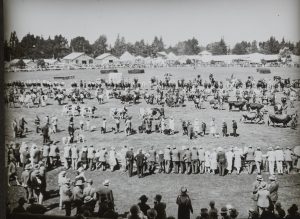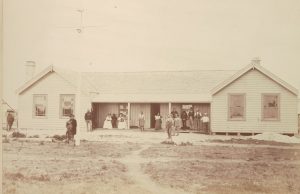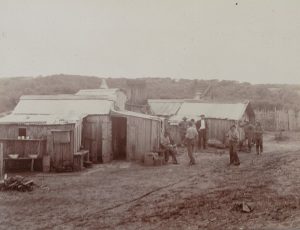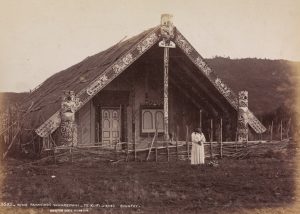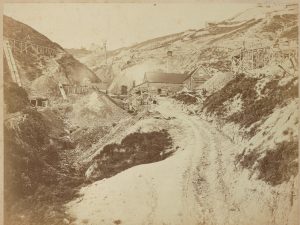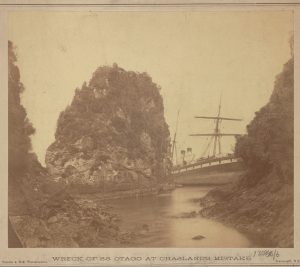
Pamphlets of 19th-century New Zealand
The Royal Commonwealth Society Library department’s efforts to discover its collection of rare nineteenth-century pamphlets have turned to New Zealand, and a large number of works have been added to the library’s on-line iDiscover catalogue. The blog features images from the RCS’s extensive collection of early New Zealand photographs to illustrate their themes. Chronologically, the bulk of the pamphlets fall within the 1890s, and shed fascinating light upon an important period of the nation’s growth and development. Politics and government form a prominent theme with intense discussion over the political future of the colony, whether it should join the Commonwealth of Australia (created in 1901) or follow its own path, a resolution which would lead to self-governing dominion status in 1907.
The most dramatic development, however, was the success of the campaign for female suffrage, achieved in 1893 after decades of struggle. The Electoral Act of that year granted all women in New Zealand the right to vote, which they exercised almost immediately in parliamentary elections. The pamphlets expounded all arguments of the debate for and against female enfranchisement. The movement’s success inspired campaigners around the world, including Britain’s Dame Millicent Fawcett (1847-1929), who reflected upon the example set by New Zealand in an article published in 1894.
Social welfare was another dominant theme discussed in the publications, and particularly poverty in old age, an issue which increasingly absorbed the attention of social reformers, friendly societies and trade unions during the late nineteenth century. New Zealand set a precedent with the Old Age Pension Act of 1898, which recognised the state’s responsibility to care for its elderly citizens in want. Through means-testing it provided a modest pension for the elderly ‘of good moral character’, the world’s first scheme supported by general taxation. The New Zealand Agent General in London, William Pember Reeves (1857-1932), wrote in its support, and was invited to speak by British campaigners advocating a similar provision, which culminated in the United Kingdom’s Old-Age Pensions Act 1908. Concern over industrial relations and workers’ claims to fair pay and safe working conditions was reflected in New Zealand’s Industrial Conciliation and Arbitration Act 1894. It introduced a pioneering scheme of compulsory arbitration of disputes, inspiring much comment there and in Britain.
There are works about the Maori, commenting upon their relations with government, and exploring their history, language and culture. Authors discussed the quality of life in New Zealand and the opportunities offered by emigration. Travel, geographic and sporting writers reported upon a host of topics, including recent achievements in mountaineering.
Pamphlets encouraged economic growth, in particular the application of new refrigeration technology for the export of frozen meat following William Soltau Davidson’s (1846-1924) pioneering work to create the industry in the early 1880s. The gold industry, established following the rushes of the 1860s and 1870s, received a boost in the 1890s from the application of new mining processes. There was also considerable interest in developments in transportation which more closely connected New Zealand to the wider world.
All of these pamphlets can be searched for on iDiscover using thematic and geographical keywords, or Library of Congress subject headings.
The featured image at top is Maori canoe heads, paddles, plate XLII, George French Angas ‘The New Zealanders illustrated’ (1847), RCS.FL.89.1.OS.
More striking photographs of New Zealand may be viewed on Cambridge Digital Library.

